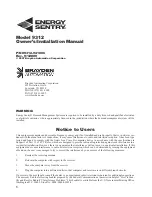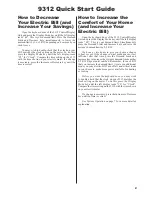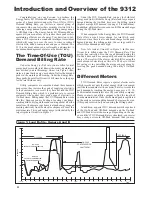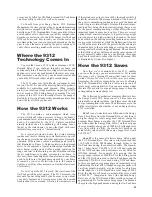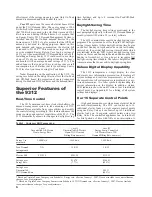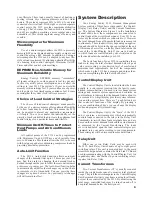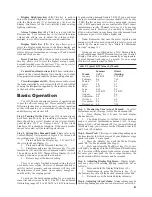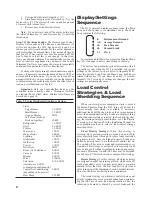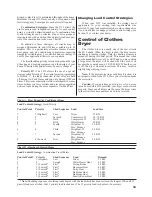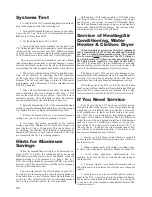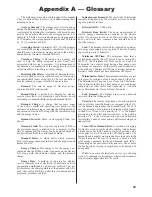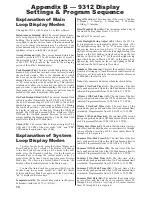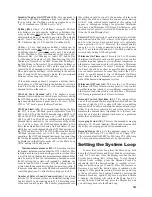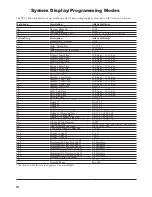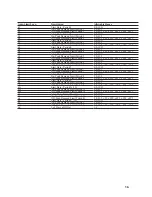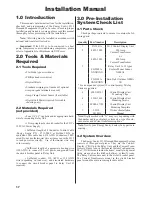
Table I - Customer Bill Comparison
Case I
Case II
Case III
Uncontrolled All-Electric
Uncontrolled All-Electric
Energy Sentry Controlled
Home-Energy Rate
Home-TOU Demand
All-Electric Home-TOU
Billing Rate (summer)
Demand Billing Rate (summer)
Energy Use
3000 Kwh
3000 Kwh
3000 Kwh
per month
Peak Demand
N/A
19 KW
5 KW
during month
Electric Bill
$218.28
$201.54
$112.23
Savings over
$16.74
$106.05
Energy Rate
(7.7%)
(48.5%)
Savings over
Uncontrolled
$89.31
TOU Demand Rate
(44.3%)
* Based on Virginia Power Company rate Schedule 1 Energy rate, effective January 1, 2007. Does not include taxes, miscellaneous
charges, fees, or adjustments.
** Based on Virginia Power Company Summer rate Schedule 1S TOU-Demand rate, effective January 1, 2007. Does not include
taxes, miscellaneous charges, fees, or adjustments.
5
offsets most of the savings on energy costs. Only On-Peak
demand is measured and billed under this rate.
Case III
again uses the same all-electric home billed
under the TOU Demand Rate. The energy usage is 3000
Kwh which is the same as Case I and Case II. Let’s assume
that 750 Kwh were used in the On-Peak times and 2250
Kwh were used during Off-Peak times. Let’s assume that
an Energy Sentry 9312 Demand Management System is
installed and that the On-Peak demand limit set by the
homeowner is 5 KW. Let’s also assume that the Off-Peak
demand is not used for billing purposes. Based on this
peak demand and energy consumption, the electric bill
is reduced to $112.23**. This means a savings of 48.5%
over the standard Energy Rate in Case I and a savings of
44.3% over the uncontrolled TOU Demand Rate in Case II.
Installing an Energy Sentry 9312 could result in a savings
of up to 50% of your monthly utility bill during the heavy
use months with an average annual savings of 35%. The
added bonus is that you don’t have to reduce your overall
consumption to save. Rather, just let your Energy Sentry
9312 level out your usage during On-Peak times.
Note:
Depending on the application of the 9312, the
savings are based on the utility rates in effect, the On-Peak
and Off-Peak hours, the proportion of energy consumed
during On-Peak and Off-Peak times, and the demand limit.
Superior Features of
the 9312
Real-Time Control
The 9312 contains a real-time clock which allows the
demand management system to take advantage of TOU
Demand Rates available from some utilities and modify
the control strategy accordingly. This feature enhances the
money savings and comfort capabilities of the 9312. The
9312 automatically adjusts for changes in daylight-saving
time, holidays, and up to 4 seasonal On-Peak/Off-Peak
time schedules.
Daylight-Saving Time
The daylight-saving time settings mentioned in the
next paragraph apply only to those 9312 Demand Manage-
ment Systems with Version 3.1 (or later) software.
The 9312 contains three specifi c daylight-saving time
programs. The system can be set for the pre-2007 daylight-
saving time schedule (where daylight-saving time begins
on the fi rst Sunday in April and ends on the last Sunday
in October); the new daylight-saving time schedule which
was initiated in March 2007 (where daylight-saving time
begins on the second Sunday in March and ends on the fi rst
Sunday in November); or it can be set to recognize NO
daylight-saving time schedule. The latter is helpful for cus-
tomers in areas that do not utilize daylight-saving time.
Deluxe Digital Display Capability
The 9312 incorporates a 6-digit display for clear
and simple user information presentation. It displays all
system settings and real-time measurements; as well as,
the current time. All system modes are displayed by easy-
to-read mnemonics, two letter symbols representing the
current information on the display. In addition, sixteen
LED indicators show the on/off status of each individual
control point. See Appendix B for a listing of all system
settings and displays.
8 or 16 Separate Control Points
High peak demands occur when many electrical loads
are used simultaneously. The 9312 can control up to 16
individual electric loads on eight separate control points
using one Relay Unit or it can control up to 32 individual
electric loads on 16 separate control points using two
Relay Units. The controlled appliances can be turned off
for brief periods of time with little or no interruption to



